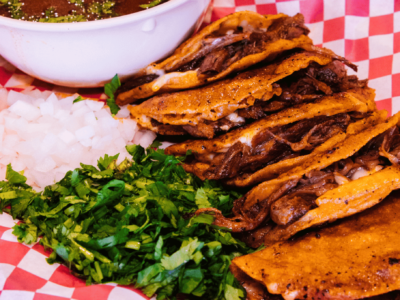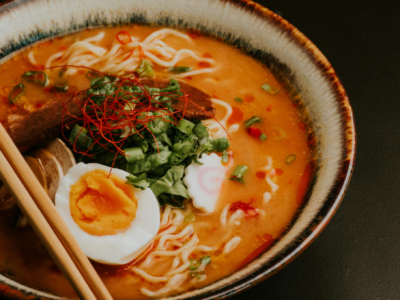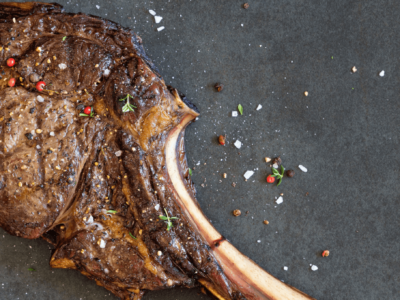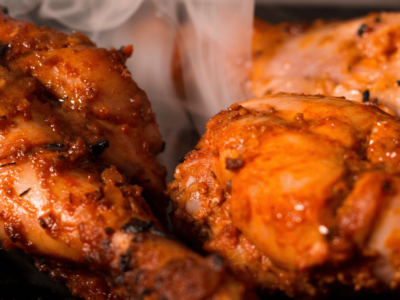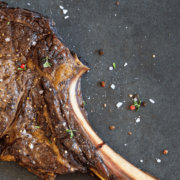- Japanese food is the most popular cuisine among consumers in Japan.
- Sushi is the most popular Japanese dish in the world, closely followed by yakiniku/steak (barbecue), sukiyaki, and eel (unagi).
- The export of Japanese food increased by a solid 14% in 2022 compared to previous years, thanks to the growing popularity of Japanese food.
It was inevitable.
It was bound to happen at some time or the other.
In fact, we were surprised that the world has only recently sat up and taken note of how delicious Japanese food happens to be – ah, the food culture in Japan is simple, authentic, and delectable.
It is humanity’s tragic flaw – to finally acknowledge something obvious when it disappears from their lives.
Our relationship with Japanese food is quite similar – it has been around for the longest time. But we never realized how it’s perhaps the best food you will ever eat (especially if you love all things Asian).
So, just when we came back from Japan after spending three months in the beautiful country, we realized that our favorite Japanese restaurant near our office had shut down. And that was enough to trigger our love for Japanese food.
Plus, it was about time we started talking about Japan’s surging popularity as the gastronomic capital of Asia!
According to the Japan Times, the Japanese government is working hard to make Japan an export powerhouse, setting goals to boost its export values to a whopping ¥2 trillion by next year and an even better ¥5 trillion by the end of 2030. This is a 5-fold increase from ¥912.1 billion in 2019.
To cut a long story short, Japanese food is booming – and we are here to help you with the best of Japan’s flavors! Stay tuned!
Contents
The 7 Best Cities In Japan For Foodies: Your Informed Guide To Japanese Food
Japan is truly a foodie’s dream come true, with every Japanese city offering something special. As a result, it was so damn difficult to come up with the 7 best locations ideal for Japanese food. After much thought and experience, here we are: the 7 best Japanese cities for foodies – trust us on this one!
1. Kyoto:
We started our gastronomic journey in Japan with Kyoto! And once you set foot in Kyoto, you will realize it is home to some of Japan’s best breweries. Even if you are in Kyoto for a few days, ensure that you get around to stuffing yourself with all that the city has to offer.
7 Best Dishes To Try In Kyoto:
The 7 best dishes that you must try out in Kyoto, Japan, are as follows:
- Herring Soba (Soba & Nishin Soba),
- Obanzai,
- Saba Sushi,
- Kyoto Ramen,
- Green Tea (Matcha) Desserts,
- Shojin Ryori, and
- Kaiseki.
Bonus Section: 7 Best Places To Eat In Kyoto
The 7 best places to eat Herring Soba in Kyoto are as follows:
- Sohonke Nishin-Soba Matsuba,
- Honke Owariya,
- Sobashubo Ichii,
- Juugo,
- Shofukutei,
- Soba-no-Mi Yoshimura, and
- Teuchisoba Kanei.
The 7 best places to eat Obanzai in Kyoto are as follows:
- Tuzuri,
- Nagomi Kyo no Obanzai,
- Takayama,
- Taroya Kyoto Home Cuisine,
- Aoi,
- Oryori Menami, and
- Teuchisoba Kanei.
The 7 best places to eat Saba Sushi in Kyoto are as follows:
- Sushi Sakai,
- Sushi Gion Matsudaya,
- Azuma Sushi,
- Sushi Taka,
- Sushi Dining 大八,
- Tai Sushi, and
- Taizō.
The 7 best places to eat Kyoto Ramen in Kyoto are as follows:
- Kyoto Engine Ramen,
- Ramen Sen-no-Kaze Kyoto,
- Ginjo Ramen Kubota,
- Ippudo – Kyoto Porta,
- Ichiran – Kyoto Kawaramachi,
- Honke Daiichi-Asahi, and
- Ramen Muraji.
The 7 best places to eat Green Tea (Matcha) Desserts in Kyoto are as follows:
- Nana’s Green Tea,
- Maccha House Kyoto Kawaramachi,
- WA Matcha,
- Green Cafe Style SANOAH Nijo,
- Maccha House,
- Japanese Matcha Sweets and
- Nishiki Ichiha.
The 7 best places to eat Shojin Ryori in Kyoto are as follows:
- Ajiro,
- Tenryuji Temple Shigetsu,
- Yoshuji,
- Tofu Restaurant Saigen-in,
- Hale (菜食 晴),
- Daitokuji Ikkyu, and
- Izusen – Daijiin shop
The 7 best places to eat Kaiseki in Kyoto are as follows:
- Kikunoi Honten,
- Hanasaki,
- Kyoto cuisine Hanasaki Nishikiten,
- Inayoshi Restaurant,
- Gion Rikichi,
- Gion Karyo, and
- Mokubee.
2. Osaka:
Osaka is, hands down, Japan’s best food city! It is easy to understand why Osaka is considered to be the food capital of Japan. The best part? If you have been wondering about the things to do in Japan, then you can have a great time eating your way through Osaka.
7 Best Dishes To Try In Osaka:
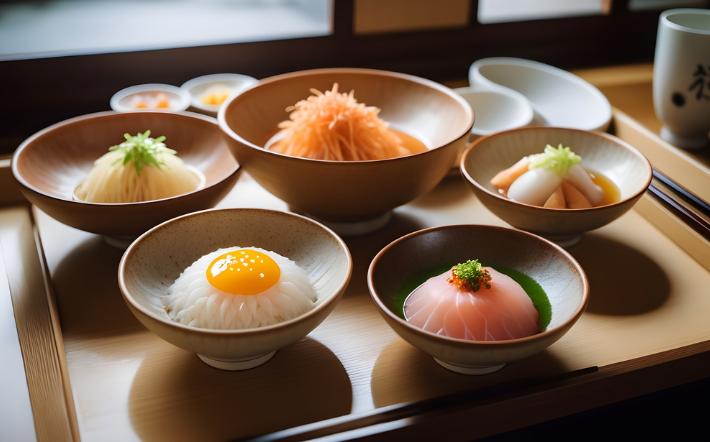
The 7 best dishes that you must try out in Osaka, Japan, are as follows:
- Oshi-Zushi,
- Kushikatsu,
- Tessa (Fugu),
- Kitsune Udon,
- Sake Lees Soup,
- Okonomiyaki, and
- Takoyaki.
Bonus Section: 7 Best Places To Eat In Osaka
The 7 best places to eat Oshi-Zushi in Osaka are as follows:
- Sushi SANSHIN,
- Daiki-suisan kaitenzushi Dotombori,
- Kiyozushi,
- Endo Sushi,
- Sushi Hoshiyama,
- Sushizanmai Dotombori, and
- Sushi Hayata.
The 7 best places to eat Kushikatsu in Osaka are as follows:
- Yaekatsu,
- Rokkakutei,
- Kitashinchi Kushikatsu Bon,
- Kushikatsu Omiya,
- Kushikatsu Gojoya,
- Kushinobo Osaka Hozenji, and
- Kushikatsu Tanaka America-mura.
The 7 best places to eat Tessa in Osaka are as follows:
- Fujiya 1935,
- Dotombori Jihei
- Taian,
- Seafood Japanese Restaurant IZAKAYA NAGOSHI,
- Kagaman,
- Gozafuku蟹, and
- Sushi Hayata.
The 7 best places to eat Kitsune Udon in Osaka are as follows:
- Tsurutontan Soemoncho,
- Kasuya Hozenji,
- Kitatake Udon,
- Matsuya,
- Sanuki udon Shikokuya,
- Sinsaku Udon, and
- Kawafuku Honten.
The 7 best places to eat Sake Lees Soup in Osaka are as follows:
- Ota,
- Sakae Sushi,
- Kikizakeya,
- Sake Bar Sawara (Grand Front Osaka),
- Osaka-oden Yakiton Kyu,
- Rakushin, and
- Sanukiudon Byakuan.
The 7 best places to eat Okonomiyaki in Osaka are as follows:
- Chibo Okonomiyaki Restaurant,
- Okonomiyaki Kiji,
- Okonomiyaki Tombe,
- Namba Okonomiyaki Ajinoya Honten,
- Dotonbori Ichiaki,
- Okonomiyaki Usagiya, and
- Okonomiyaki Sakura.
The 7 best places to eat Kaiseki in Kyoto are as follows:
- Takoyaki Juhachiban Dotonbori,
- Takoyaki Wanaka Sennichimae,
- Dotombori Akaoni,
- Kogaryu Takoyaki,
- Takoyaki Wanaka Dotonbori,
- Hanadako, and
- Osaka Takoyaki Park.
3. Tokyo:
Like most big cities, Tokyo happens to be home to different delicacies – both local and national. While you visit different restaurants in Tokyo and basically live every tourist’s dream, there are some specialties that the city is popularly known for!
7 Best Dishes To Try In Tokyo:
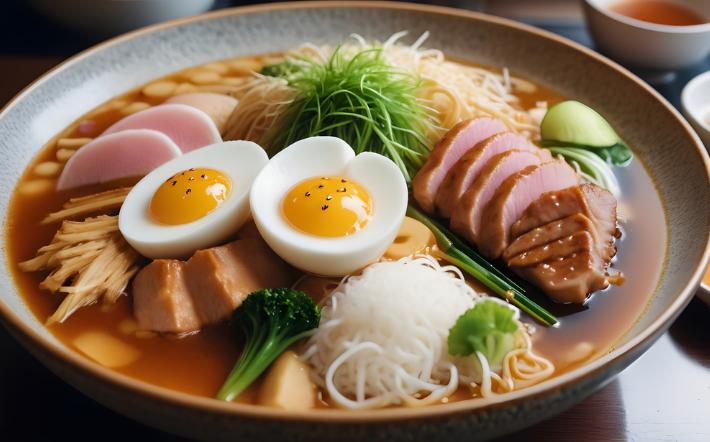
The 7 best dishes that you must try out in Tokyo, Japan, are as follows:
- Sushi,
- Japanese Curry,
- Ramen,
- Yakitori,
- Tempura,
- Tonkatsu, and
- Wagyu Beef.
Bonus Section: 7 Best Places To Eat In Tokyo
The 7 best places to eat Sushi in Tokyo are as follows:
- Sushisho Masa,
- Mikorezushi,
- Sushi M,
- Sukiyabashi Jiro Roppongi Hills Restaurant,
- Sushi Yoshitake,
- Uogashi Nihon-Ichi, and
- Sushi Take.
The 7 best places to eat Japanese Curry in Tokyo are as follows:
- Joto Curry,
- Have More Curry,
- YOGORO,
- Curry Bondy,
- Sunday And Curry,
- NC (Natural Curry) Restaurant, and
- Oishii Curry.
The 7 best places to eat Ramen in Tokyo are as follows:
- Ichiran Ramen,
- Ramen Nagi – Shinjuku Golden-gai Honkan,
- Rokurinsha,
- Ippudo – Ginza,
- Tokyo Ramen Street,
- Ramen Zundou-ya, and
- Tokyo Rahmen Ten.
The 7 best places to eat Yakitori in Tokyo are as follows:
- Yakitori Imai,
- Birdland,
- Tori Chataro,
- Shirokane Toritama Kagurazaka,
- Torigin Honten,
- Tokyo Yakitori Honpo, and
- Toritake.
The 7 best places to eat Tempura in Tokyo are as follows:
- Tempura Shinjuku Tsunahachi Souhonten,
- Casual Tempura Restaurant,
- Tempura Shinjuku Tsunahachi Tokyo Daimaru,
- Tempura Shinjuku Tsunahachi Ginza,
- Kobikicho Tenkuni,
- Tenyoshi, and
- Tenichi Ginza Main Store.
The 7 best places to eat Tonkatsu in Tokyo are as follows:
- Katsukura Shinjuku Takashimaya,
- Tonkatsu Suzuki,
- Tonkatsu Niimura,
- Imakatsu Ginza
- Tonkatsu Marugo,
- Ginza Bairin Main Shop and
- Tonkatsu Maisen Aoyama.
The 7 best places to eat Wagyu Beef in Tokyo are as follows:
- Gyūan Ginza,
- Oniku Karyu,
- Hakushū Teppanyaki,
- Han’s Kitchen Annex,
- Yonezawa Gyu Oki Tokyo Station Branch,
- HACHI, and
- Wagyu to Worldwide.
4. Hiroshima:
Hiroshima is a beautiful place – but that is not why we loved our time there. It was the sheer authenticity of food in Hiroshima – especially the local favorites – that made up forever fans!
7 Best Dishes To Try In Hiroshima:

The 7 best dishes that you must try out in Hiroshima, Japan, are as follows:
- Okonomiyaki,
- Oysters,
- Momiji Manju,
- Hassaku,
- Grilled Conger Eel,
- Shiru Nashi Tantanmen, and
- Setouchi Lemons.
Bonus Section: 7 Best Places To Eat In Hiroshima
The 7 best places to eat Okonomiyaki in Hiroshima are as follows:
- Okonomiyaki Teppan-yaki Momiji-Tei,
- Okonomi mura Suigun,
- Ichi Okonomiyaki,
- Reichan Hiroshima,
- Jirokichi,
- Atom, and
- Gokuu.
The 7 best places to eat Oysters in Hiroshima are as follows:
- Kakiichiban,
- Guttsuri-ann,
- Kurohige Seafood Seafood,
- Oyster ship Kanawa,
- Oyster and beef sake MURO,
- Tsuki Akari, and
- Mabui Hiroshima Ekimae.
The 7 best places to eat Momiji Manju in Hiroshima are as follows:
- Sakamoto Momijimanju,
- The Takatsudo Flagship Store,
- Nishikido Momijimanju Cake Shop,
- Yamadaya Manju,
- Momijido,
- Fujiiya, and
- Iwamura Momijiya.
The 7 best places to eat Hassaku in Hiroshima are as follows:
- Masui,
- Kome Kome Shokudo,
- Hazeya,
- Akisaryo,
- Miyabi Tei,
- Jirokichi, and
- Umenohana Hiroshima.
The 7 best places to eat Grilled Conger Eel in Hiroshima are as follows:
- Tsuki Akari,
- Kakiden,
- Kodani,
- Wakamiya,
- Kakiichiban,
- Wanari, and
- Fujiya.
The 7 best places to eat Shiru Nashi Tantanmen in Hiroshima are as follows:
- Shirunashi Dan Dan Noodle Masara,
- King-ken Ōtemachi Honten,
- Ichiran Hiroshima Hondori shop,
- Hiroshima Oysters and Wagyu Beef Ramen SEITEN-WO-TSUKE,
- Okkundou Mazemen,
- Kiyochan, and
- Hanaichimonme Honten.
The 7 best places to eat Setouchi Lemons in Hiroshima are as follows:
- Japanese Restaurant “Setouchi”
- Setouchi Cuisine Hiroki,
- Wanari,
- SENSUI,
- More Than Hiroshima,
- Lemon Stand Hiroshima, and
- Ekohiiki.
5. Yokohama:
Inspite of being a big city, most of us often forget about Yokohama. Moreover, visiting Yokohama is a treat on its own, considering the city features some of the city’s best ramen.
Additionally, the city is also known for an omelet dish that you did not know you had been missing out on for your whole life.
7 Best Dishes To Try In Yokohama:
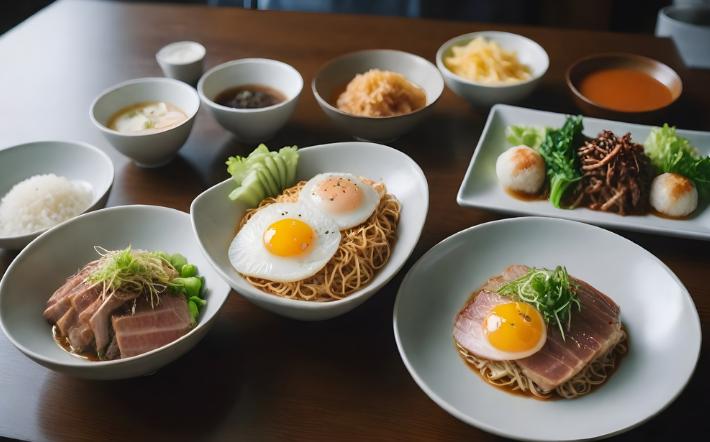
The 7 best dishes that you must try out in Yokohama, Japan, are as follows:
- Sanmamen (Soba & Nishin Soba),
- Gyu-nabe,
- Doria,
- Spaghetti Napolitan,
- Shumai Bento,
- Edomae Sushi and
- Soup Dumplings.
Bonus Section: 7 Best Places To Eat In Yokohama
The 7 best places to eat Sanmamen (Soba & Nishin Soba) in Yokohama are as follows:
- Kadohei Tsuketen Soba,
- Minatoan Yamashitaten,
- Minatoan Sohonten,
- Taisoan,
- Rikyuan,
- Soba Koroan, and
- Itasoba Aoi.
The 7 best places to eat Gyu-nabe in Yokohama are as follows:
- Janomeya,
- Araiya,
- Ohtanawanoren,
- Seryna Yokohama Roman-chaya,
- Araiya Sogo Yokohama,
- Gyubei Soan Sogo Yokohama, and
- Motomachi Uchiki Pan.
The 7 best places to eat Doria in Yokohama are as follows:
- Yokohama Motomachi Doria,
- Yokohama NADAMAN,
- SMAAK by Jacob Jan Boerma,
- KAIGANDORI Des Anges,
- Yokohama Asian Dining & Bar,
- Ningyocho Imahan Yokohama Takashimaya, and
- DaiIchiTei.
The 7 best places to eat Spaghetti Napolitan in Yokohama are as follows:
- Market Restaurant AGIO LUMINE Yokohama,
- J Pasta Yokohama Motomachi,
- Capricciosa,
- SALONE 2007,
- Napule Yokohama Takashimaya,
- Kamakura Pasta, and
- Osteria Austro.
The 7 best places to eat Shumai Bento in Yokohama are as follows:
- Ume no Hana Yokohama Sky Building Store,
- Banwarou,
- Mei Xin Restaurant,
- Ryūmai,
- Setsuen,
- Chinatown Hong Kong Restaurant, and
- Hōtenkaku.
The 7 best places to eat Edomae Sushi in Yokohama are as follows:
- Mawashizushi KATSU,
- Tsukiji Sushisay,
- Sushi Uoju Sogo Yokohama,
- Nishiki Sushi,
- Sushi Tokyo Ten Yokohama,
- Mitsuya, and
- Hamada.
The 7 best places to eat Soup Dumplings in Yokohama are as follows:
- Tohoku Jinka Chinatown Yokohama,
- Dalian,
- Din Tai Fung Yokohama,
- Sanki,
- Keitokuchin,
- Ryūmai, and
- Banwarou.
6. Nagoya:
If you visit Kyoto, you can also visit Nagoya, which is only a short ride away. Moreover, Nagoya happens to be one of Japan’s hidden gems – not just for food but also for fun.
7 Best Dishes To Try In Nagoya:

The 7 best dishes that you must try out in Yokohama, Japan, are as follows:
- Tenmusu,
- Kishimen,
- Hitsumabushi,
- Ton-Chan,
- Taiwan Ramen,
- Jambo Ebi Furai, and
- Miso Nikomi Udon.
Bonus Section: 7 Best Places To Eat In Nagoya
The 7 best places to eat Tenmusu in Nagoya are as follows:
- Tenmusu Senju,
- Jiraiya Main Branch,
- Nigiritate,
- Yukiko Obasan no Daidokoro,
- Nagoya Daruma,
- Yamamotoya, and
- Yamamotoya Ookute.
The 7 best places to eat Kishimen in Nagoya are as follows:
- Osu Kishimen,
- Nadai Kishimen Sumiyoshi (JR Nagoya Station Tracks 10-11),
- Kishimen-tei,
- Ekikama Kishimen,
- Kineya,
- Sumiyoshi JR Nagoya Station, and
- Miya Kishimen – Jingu East.
The 7 best places to eat Hitsumabushi in Nagoya are as follows:
- Inou Hitsumabushi ESCA,
- Hitsumabushi Uya Nagoya Station Shop,
- Munagi Hitsumabushi,
- Hitsumabushi Bincho Dainagoyabirujinguten,
- Maruya,
- IBASHOU, and
- Bincho.
The 7 best places to eat Ton-Chan in Nagoya are as follows:
- Misokatsu Yabaton (9F),
- Din Tai Fung Nagoya JR Towers Restaurant,
- Misokatsu Yabaton,
- Maruhashokudo JR Nagoyaekiten,
- Szechwan Restaurant Chen Nagoya,
- Maruya Honten – JR Nagoya Station Store, and
- Kitchen Nagoya.
The 7 best places to eat Taiwan Ramen in Nagoya are as follows:
- Misen JR Nagoyaeki-ten,
- Misen Yaba shop,
- Ichiran Nagoya Sakae,
- Misen Meieki shop,
- Ichiran Ramen,
- Ichiran Nagoya Station store, and
- Shishimaru.
The 7 best places to eat Jambo Ebi Furai in Nagoya are as follows:
- EBIDOTE,
- Maruhashokudo JR Nagoyaekiten,
- Uogashisakaba FUKU Hamakin KITTE Nagoyaten,
- Don Don Tei,
- Torikaisohonke Sakaerashikkuten,
- Isomaru Suisan, and
- Maguro-goya Honten ESCA-ten.
The 7 best places to eat Miso Nikomi Udon in Nagoya are as follows:
- Miso Nikomi no Kadomaru,
- Kineya,
- Udon SEN,
- Asadaya,
- Nadai Kishimen Sumiyoshi (JR Nagoya Station Tracks 10-11),
- Japanese curry udon 天晴, and
- Nikomitei.
7. Kobe:
If you love meat, then you have to visit Kobe! While Kobe is an amazing place to visit, it is also a must-visit for every Japanese food lover. After all, eating the iconic Kobe beef while you are at Kobe is what food dreams are made up of!
7 Best Dishes To Try In Kobe:
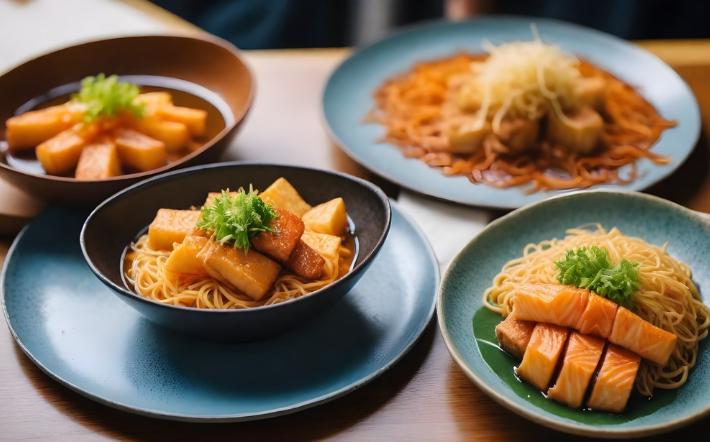
The 7 best dishes that you must try out in Kobe, Japan, are as follows:
- Kobe Beef,
- Chuka Ryori,
- Gyoza,
- Akashiyaki,
- Japanese Sake,
- Sushi, and
- Korokke.
Bonus Section: 7 Best Places To Eat In Kobe
The 7 best places to eat Kobe Beef in Kobe are as follows:
- Kobe Beef Steak Restaurant Royal Mouriya,
- Kobe Steak Sai-Dining,
- Genkichi Kobe Beef,
- Kobe Beef Steak Ishida (Main Shop),
- Wakkoqu,
- Kobe Beef Steak Sakura and
- Tor Road Steak Aoyama.
The 7 best places to eat Chuka Ryori in Kobe are as follows:
- TOH-KA-LIN,
- Japanese Restaurant Hanasato KOBE,
- Kobe Beef Steak Restaurant Royal Mouriya,
- Tsuki Usagi,
- Seriichi,
- Genkichi Kobe Beef, and
- Kobe Tanryu Sannomiya.
The 7 best places to eat Gyoza in Kobe are as follows:
- Gyoza Paokun Honten,
- Gyoza Daigaku,
- Akaman,
- Gyoza Restaurant Shoun,
- Gyoza no Ohsho,
- Ganso-Gyozaen, and
- Hyōtan Sannomiya.
The 7 best places to eat Taimeishi in Kobe are as follows:
- Japanese Restaurant Hanasato KOBE,
- Kobe Steak Sai-Dining,
- Kobe Beef Steak Restaurant Royal Mouriya,
- Genkichi Kobe Beef,
- Kobe Tanryu Sannomiya,
- Steakland Kobe, and
- Kobe Plaisir.
The 7 best places to eat Japanese Sake in Kobe are as follows:
- Japanese Restaurant Hanasato KOBE,
- Kobe Shushinkan,
- SUSHI KANBE ORIENTAL HOTEL,
- Sakeyashiro,
- Hino,
- Toyoshin, and
- Kokoroya.
The 7 best places to eat Sushi in Kobe are as follows:
- Sushi Uozei Sohonten,
- Sushi Kappo Isui,
- Isamu Sushi,
- Sushi Emiko,
- SUSHI KANBE ORIENTAL HOTEL,
- Hatsu, and
- Sushi Ueda.
The 7 best places to eat Korokke in Kobe are as follows:
- Wakkoqu,
- Tsuki Usagi,
- Komon,
- Genkichi Kobe Beef,
- Kobe Plaisir,
- Tonkatsu Tarō, and
- Seriichi.
Health Benefits Of Japanese Food:
The Japanese food culture is based entirely on the principle of longevity and health. Moreover, the food is not just delicious but also has several benefits. Scroll down to check out the primary benefits of eating Japanese food!
1. Reduces Cancer Risk:
Japan has an extremely low risk for most hormone-dependent cancers like prostate and breast cancers. This is typically attributed to an increase in consumption of healthy fats, high-fiber foods, fruits, and vegetables – all of which contribute to lowering your calorie intake.
2. Lowers Heart Problems:
Globally, Japan’s rate of heart disease development is really low, especially when you compare Japan with other developed countries. The reason behind this is the Japanese food culture is all about dishes that improve your heart health,
Moreover, Japanese cuisine doesn’t include ingredients in their diet that promote bad cardiovascular health.
Plus, soy is a common ingredient used in a majority of Japanese dishes – it reduces the risk of heart attacks and regulates blood pressure. Also, it is often used as an alternative to red meat, which has a high percentage of saturated fats.
3. Aids Digestion And Relaxes You:
Japanese restaurants typically serve green tea with most of their meals. Now, green tea has multiple health benefits. For starters, it can regulate blood pressure, reduce blood sugar levels, lower cholesterol, slow aging, and boost immunity.
Green tea also contains very little caffeine compared to coffee, breaking down different oils in the digestive system. Moreover, it also helps to enhance focus and relax you since green tea is rich in antioxidants.
The Japanese Diet Plan: Is Japanese Food Healthy?

Before we talk about the lip-smacking Japanese food you will find in different regions of the country, we have to talk about the iconic Japanese Diet plan!
It is a truth universally acknowledged that Japanese food is popular not just for its unique taste but also for its different health benefits. While checking out the many health benefits of Japanese food, we stumbled upon the great Japanese Diet. And we have to talk about it!
So, What Is The Traditional Japanese Diet All About?

So, what is the traditional Japanese Diet?
The traditional Japanese diet plan features seasonal food items that are minimally processed and served in different small dishes. This eating style prioritizes the natural flavors of different dishes instead of masking them with seasonings and sauces.
So, what does this diet include? It’s rich in noodles, tofu, steamed rice, natto, seaweed, fish, and a variety of vegetables and fruits. You can eat these veggies and fruits raw or after cooking them – some even like pickling them first.
The commonality here is that all ingredients are low in additional fats and sugars. The diet also includes meat, dairy, or eggs, though these usually make up only a tiny part of the diet.
Interestingly, this traditional diet is very similar to the historical Okinawan diet, which was popular among the residents of Okinawa. People living on Okinawan Island in Japan primarily relied heavily on a diet featuring fish and rice.
Moreover, the diet contrasts with the modern Japanese food culture. After all, the current Japanese food culture is all about introducing Chinese and Western influences, including large amounts of processed food and animal protein.
Foods To Eat:
Traditionally, a Japanese diet includes the following food items:
1. Fish and Seafood:
You can include all kinds of fish and seafood. The best part? You can steam, bake, or even grill these. Moreover, you can also eat raw foods like sashimi and sushi.
2. Soy Food:
The most popular soy food options are natto, tamari, soy sauce, miso, tofu, and edamame.
3. Fruits and Vegetables:
Typically, you can eat fruits and vegetables after pickling them or even raw. You can also steam, sauté, simmer, or just add them to your soups.
4. Seaweed:
Sea vegetables are a major part of the traditional Japanese diet. They are generally dried first or eaten raw.
5. Tempura:
Tempura is a light dough made by mixing wheat flour with sparkling or cold water. It serves as a good batter for deed-fried vegetables and seafood.
6. Noodles or Rice:
Steamed rice is a staple food in Japan. The other common options include ramen, udon, or soba noodles served either in a hot broth or icy cold.
7. Beverages:
Beverages like cold barley tea or hot green tea are the primary beverages. Also, you can include sake and beer during dinner.
Also, you can include a small amount of eggs, dairy, poultry, and red meat. But these food options aren’t a part of the traditional Japanese diet.
Foods To Avoid:
So, here are the food items that you need to avoid if you want to follow the iconic Japanese diet.
1. Dairy:
Ice cream, Yogurt, Cheese, Milk, and Butter.
2. Red Meat and Poultry:
Duck, Chicken, Pork, and Beef.
3. Eggs:
Fried, Boiled, or in any way for that matter.
4. Excess Fats, Sauces, and Oils:
Fat-rich sauces, Dressings, Cooking Oils, Margarine, and more.
5. Baked Goods:
Muffins, Brownies, Pie, Croissants, Tortillas, Pita, and Bread.
6. Sugary or Processed Food:
Soft Drinks, Candy, Granola Bars, and Breakfast Cereals.
Additionally, since the diet inherently limits common snack food items such as crackers, trail mix, and chips, snacks are rare in this diet. Moreover, a traditional Japanese diet also includes desserts, as long as the dishes depend on natural ingredients like red bean paste, matcha, and fruits instead of any added sugar.
Potential Benefits Of Following The Traditional Japanese Diet:
Traditionally, the Japanese Diet is associated with a range of health benefits, such as the following:
- The diet is rich in beneficial compounds and nutrients.
- The diet will improve your digestion.
- It promotes a healthy weight.
- It promotes people against chronic diseases.
- The diet will help you live longer.
Bonus Food Spotlight: 5 Traditional Japanese Dishes That You Have To Try Out
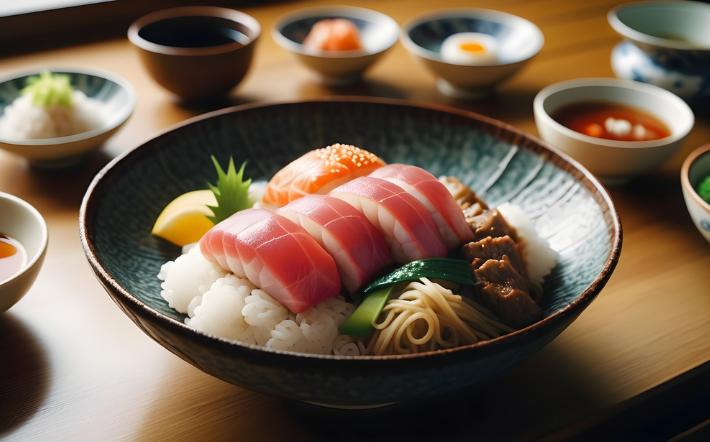
While regional differences play a major role in the delectable flavors of local and traditional Japanese food, there are some universal favorites when it comes to trying out the best of Japan.
The best part about traditional Japanese dishes is that they’re very healthy. In fact, it is healthier than most Western dishes, considering most Japanese dishes heavily rely on vegetables, seafood, and even plants.
If you still haven’t had the pleasure of trying out Japanese dishes, then it is your SIGN to do it. Here are our top 5 favorite Japanese dishes that will definitely take you on a culinary ride you will never forget!
1. Sushi:
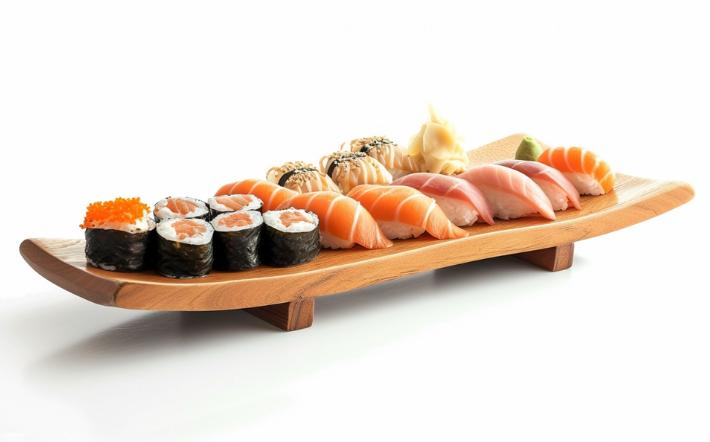
Sushi is a popular Japanese dish – everyone loves sushi!
In case you were wondering what sushi is made up of – it includes raw seafood placed in or on vinegared rice. The most common sushi ingredients are prawns, squid, salmon, tuna, pickled radish, sweet eggs, and cucumbers.
Also, while sushi is typically served raw, there are some versions that are cooked first. Moreover, it is possible to come across sushi served like rolls wrapped in dried sheets of yuba or soybean skin, rice paper, and seaweed.
2. Tempura:
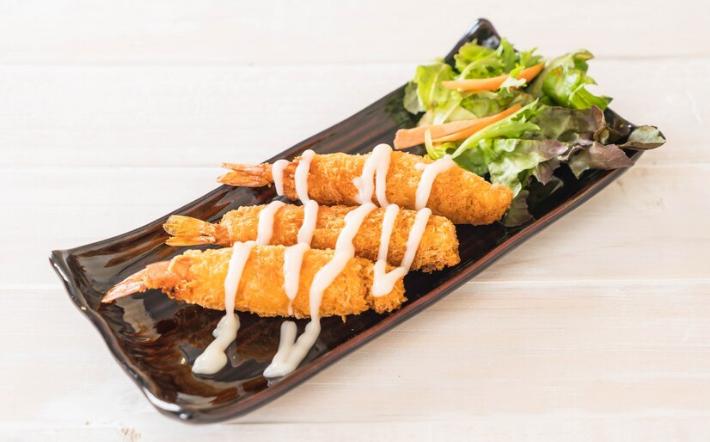
Generally, tempura is the result of deep-frying vegetables, prawns, and other seafood in vegetable oil. Of course, these items are first coated in a mixture made of wheat flour, water, and eggs. After deep-frying the items, you will see there’s a golden effect – it will be delicate and lacy. Moreover, it will taste delicious!
3. Sashimi:

Sashimi is a Japanese delicacy – it’s fresh, it’s raw, and it’s seafood! What’s there not to like about Sashimi?
Of course, there are meat variations, too, if you don’t like seafood. Moreover, restaurants typically serve sashimi with a delicious soy sauce so that you can dip your food and enjoy it. Unlike sushi, which you can eat cooked and raw, sashimi is always eaten raw and also served without any rice.
4. Miso Soup:

Miso Soup is one of our favorite Japanese dishes of all time. Restaurants usually serve this soup at the beginning of any meal. So, what’s so tasty about this dish? First comes the stock, popularly called ‘dashi’ in Japan. Next comes the hero ingredient – a soy-based miso paste!
The best part? You can add almost any ingredient when it comes to this soup – from seasonal and regional ingredients to personal tastes! Moreover, if you are allergic to soy, then you can request miso paste, which is made from chickpeas.
5. Soba And Udon Noodles:

We fell in love with Japanese food when we tried out some of their noodles. There are hundreds of delicious varieties of Japanese noodles. Two of the most popular types of Japanese noodles are soba and udon noodles.
While udon noodles are made using wheat flour, soba noodles are made using buckwheat flour. Restaurants serve both these noodles after dipping them in some sauce (mostly soy sauce) or in a broth.
Here, soba noodles have a major benefit – if you haven’t realized yet, these noodles are gluten-free. Just check the packaging to ensure that the soba noodles you are eating are made from 100% gluten-free flour such as potato, rice, or buckwheat. Sometimes, some versions of soba noodles are made by mixing wheat flour with gluten-free flour.
Additional Reading:

